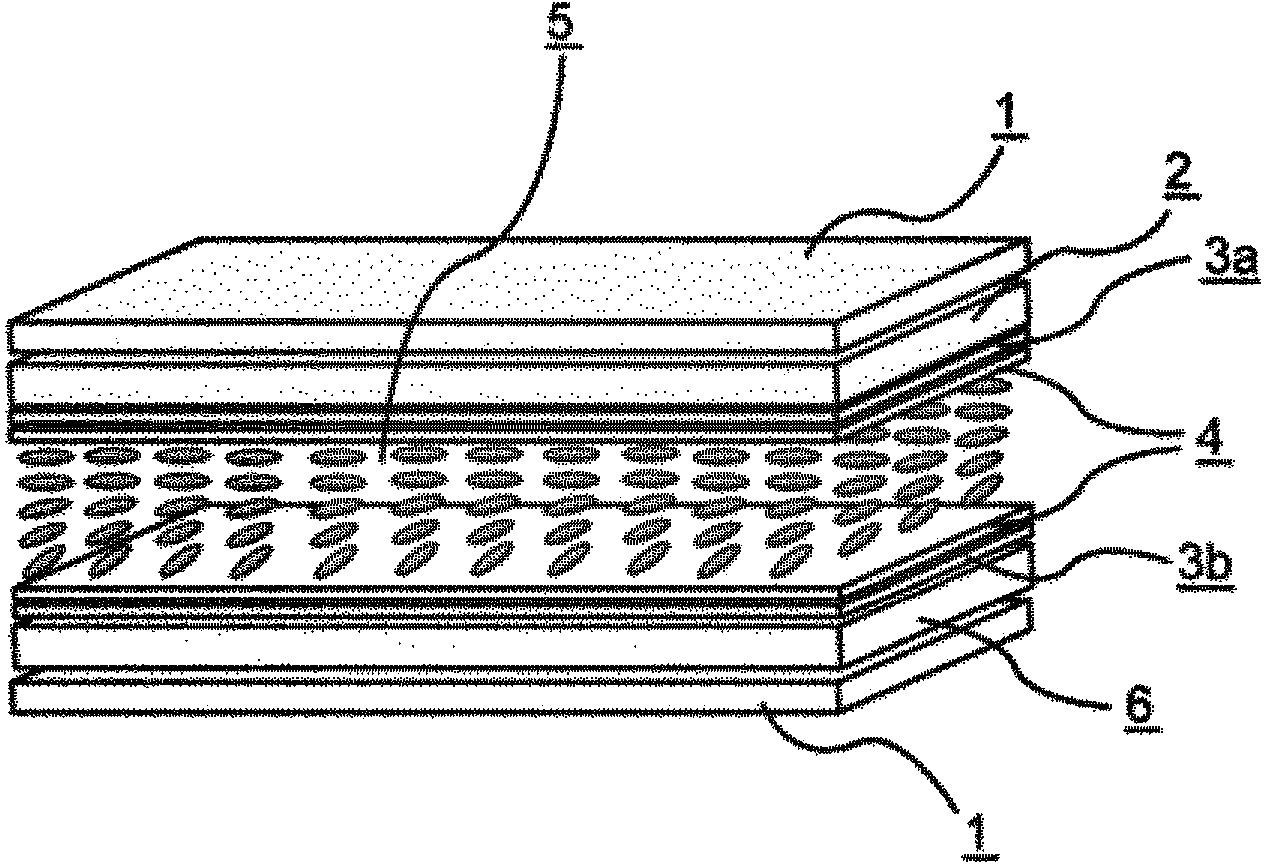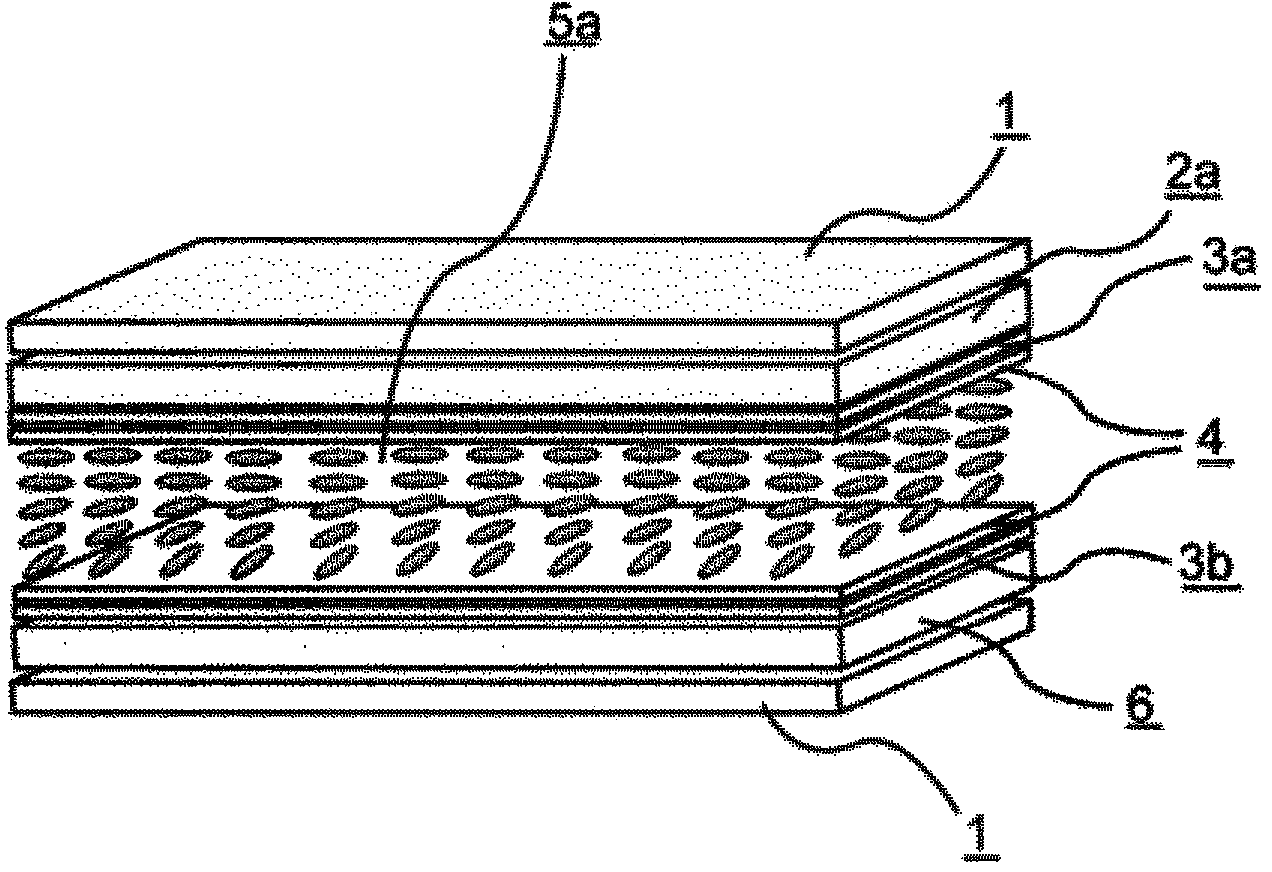Liquid crystal display device
A liquid crystal display device, liquid crystal composition technology, applied in the direction of liquid crystal materials, instruments, chemical instruments and methods, etc., can solve problems such as uneven orientation, white spots, and reduction, and achieve the effect of preventing reduction and preventing white spots
- Summary
- Abstract
- Description
- Claims
- Application Information
AI Technical Summary
Problems solved by technology
Method used
Image
Examples
Embodiment 1~4
[0291] Make an electrode structure on at least one of the first and second substrates, form a horizontally oriented orientation film on the respective opposite sides, and then perform a weak rubbing treatment to make an IPS unit, sandwich the first substrate and the second substrate Liquid crystal composition 1 shown below was used. Table 4 shows the physical property values of the liquid crystal composition 1. Then, using the color filters 1 to 4 shown in Table 2, the liquid crystal display devices (d gap =4.0 μm, alignment film AL-1051). The VHR and ID of the obtained liquid crystal display device were measured. In addition, burn-in evaluation of the obtained liquid crystal display device was performed. The results are shown in Table 5.
[0292] [chem 22]
[0293]
[0294] [Table 4]
[0295] T NI / ℃
75.8
Δn
0.112
no
1.488
ε ⊥
5.5
Δε
2.9
η / mPa·s
13.5
[0296] [table 5]
[0297] ...
Embodiment 5~12
[0301] Liquid crystal display devices of Examples 5 to 12 were prepared using the color filters shown in Table 2 by sandwiching liquid crystal compositions 2 to 3 shown in Table 5 in the same manner as in Example 1, and their VHR and ID were measured. Moreover, the burn-in evaluation of this liquid crystal display device was performed. The results are shown in Tables 7-8.
[0302] [Table 6]
[0303]
[0304] [Table 7]
[0305]
[0306] [Table 8]
[0307]
[0308] The liquid crystal display devices of Examples 5 to 12 realized high VHR and small ID. In addition, in the evaluation of burn-in, there was no afterimage, or even if there was an afterimage, it was very small, which was at an allowable level.
Embodiment 13~24
[0310]Liquid crystal display devices of Examples 13 to 24 were prepared using the color filters shown in Table 2 by sandwiching liquid crystal compositions 4 to 6 shown in Table 9 in the same manner as in Example 1, and their VHR and ID were measured. Moreover, the burn-in evaluation of this liquid crystal display device was performed. The results are shown in Tables 10-12.
[0311] [Table 9]
[0312]
[0313] [Table 10]
[0314]
[0315] [Table 11]
[0316]
[0317] [Table 12]
[0318]
[0319] The liquid crystal display devices of Examples 13 to 24 realized high VHR and small ID. In addition, in the evaluation of burn-in, there was no afterimage, or even if there was an afterimage, it was very small, which was at an allowable level.
PUM
| Property | Measurement | Unit |
|---|---|---|
| coating thickness | aaaaa | aaaaa |
Abstract
Description
Claims
Application Information
 Login to View More
Login to View More - R&D
- Intellectual Property
- Life Sciences
- Materials
- Tech Scout
- Unparalleled Data Quality
- Higher Quality Content
- 60% Fewer Hallucinations
Browse by: Latest US Patents, China's latest patents, Technical Efficacy Thesaurus, Application Domain, Technology Topic, Popular Technical Reports.
© 2025 PatSnap. All rights reserved.Legal|Privacy policy|Modern Slavery Act Transparency Statement|Sitemap|About US| Contact US: help@patsnap.com



